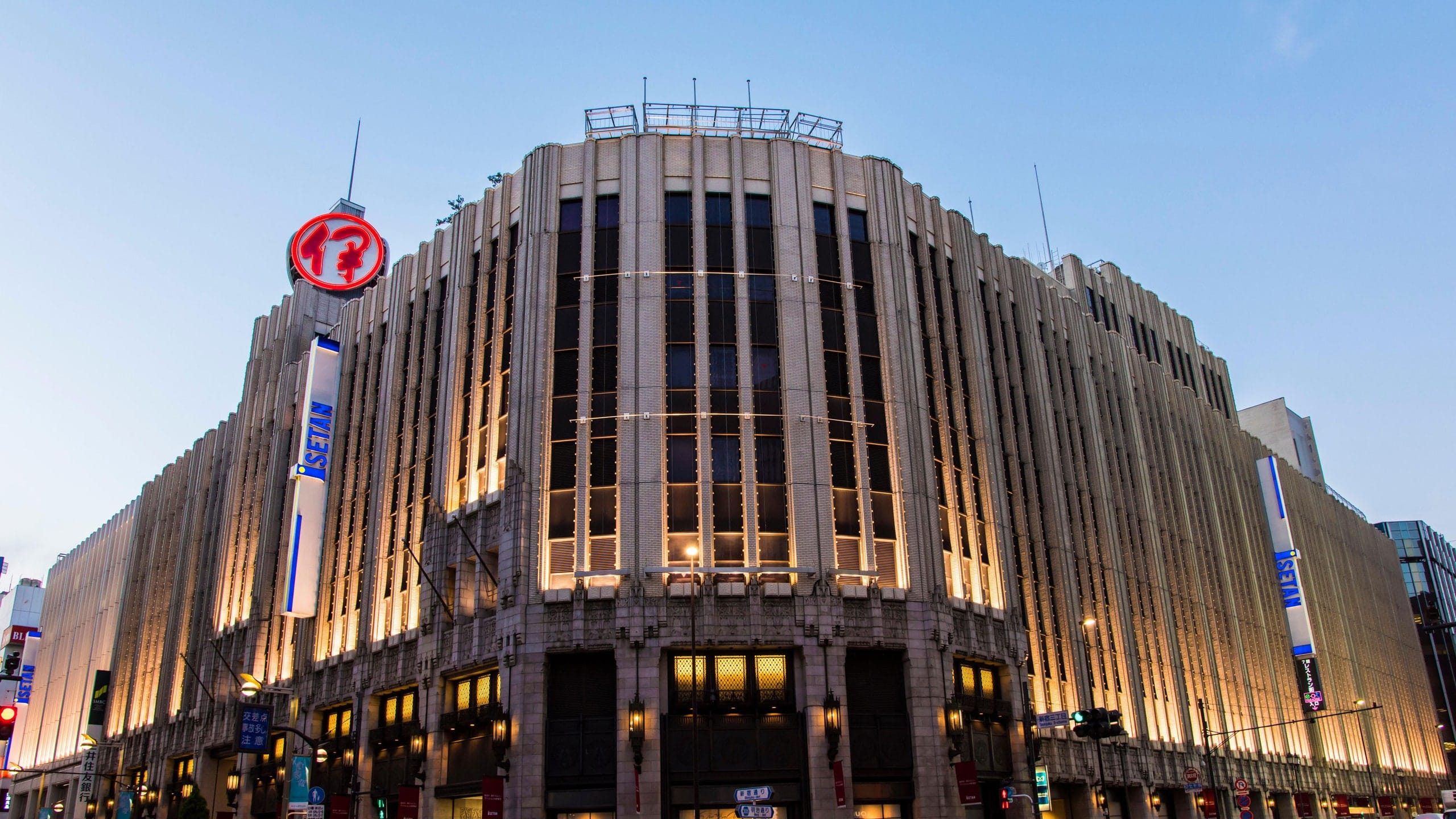[vc_row njt-role=”people-in-the-roles” njt-role-user-roles=”administrator,editor,author,armember”][vc_column][vc_column_text]
Boosted by the growth of a young, affluent, spendthrift clientele, this multi-brand sales channel has almost returned to its pre-pandemic level. Luxury brands generate one third of their sales through this channel, an exceptional rate.
For the luxury goods market in Japan, and in this country, the department store channel, the blue chips are making a comeback.
One of the reasons for this is the growing number of members of the younger generation joining the affluent club. Often enriched by their work as start-ups, they are indeed big spenders!
Confirmed growth
According to the Nikkei Asia business daily, sales in Japanese department stores (167 stores managed by 66 operators) in 2022 were 88% of the level recorded in fiscal 2019, just before the pandemic.
Having already returned to growth in 2021, they rose by 16% last year to 5.1 trillion yen (31.6 billion euros).
And in 2023, the pace will remain steady. According to the Japanese Department Store Association, department store sales rose by a further 10% in the first half of the year to around 2,500 billion yen (15.8 billion euros).
One third of luxury sales in department stores
Luxury brands can only rejoice. According to the business magazine Challenges, relying on “several sources”, one third of luxury group sales in Japan are made in department stores, and two thirds in directly-operated boutiques. Much more than in other markets.
It’s true, as Challenges reminds us, that imported luxury goods first made a name for themselves on the Japanese market thanks to hyakkaten (“stores with a hundred counters”). This was before luxury brands began opening their own branches in Japan in the late 70s.
Nevertheless, the Japanese department store model has proved resilient. One of its undeniable assets at a time when experiential luxury is gaining ground across the globe is that it has pioneered the concept of a global destination, bordering on other places of relaxation such as restaurants, theaters and art galleries…
Young, affluent, big-spending customers
Also according to Nikkei, more recent department store spending has been boosted by that of a high-powered clientele. The business daily cites estimates from the Nomura Research Institute, which point to a marked increase in the number of affluent and very affluent Japanese shoppers. The number of Japanese with financial assets in excess of 100 million yen (63 million euros) rose by 17% between 2017 and 2021. They now number around 1.48 million households, a record since 2005!
For department stores, this buoyant environment translates into a buoyant wave.
Isetan Shinjuku, the legendary address of the Isetan chain founded in Tokyo in 1886, set the record for sales per store in Japan in 2022. However, purchases made by young people or those in their forties via a personal shopping service accounted for 33% of the latter…an increase of 10 points on 2020!
In Daimaru Matsuzakaya department stores, purchases made via personal shopping services by customers aged between 20 and 40 are also growing year on year. In 2022, they soared by over 20%!
Louis Vuitton at Isetan
This near-tsunami has not escaped the attention of luxury brands seeking to rejuvenate their audience. Louis Vuitton, Lvmh‘s flagship brand, is no exception.
According to Challenges magazine, Louis Vuitton will soon open a boutique in Tokyo’s Isetan department store. The saddler will cross the street from his current boutique at the Shinjuku-sanchome crossroads. For the first time, he will be moving into a space within Isetan, which until now he has been blissfully unaware of. One industry expert describes it as “a change of era”.
Read also > Givenchy names actress Nanao Arai its first Japanese ambassador
Featured photo : © Alamy[/vc_column_text][/vc_column][/vc_row][vc_row njt-role=”not-logged-in”][vc_column][vc_column_text]
Boosted by the growth of a young, affluent, spendthrift clientele, this multi-brand sales channel has almost returned to its pre-pandemic level. Luxury brands generate one third of their sales through this channel, an exceptional rate.
For the luxury goods market in Japan, and in this country, the department store channel, the blue chips are making a comeback.
One of the reasons for this is the growing number of members of the younger generation joining the affluent club. Often enriched by their work as start-ups, they are indeed big spenders!
Confirmed growth
According to the Nikkei Asia business daily, sales in Japanese department stores (167 stores managed by 66 operators) in 2022 were 88% of the level recorded in fiscal 2019, just before the pandemic.
Having already returned to growth in 2021, they rose by 16% last year to 5.1 trillion yen (31.6 billion euros).
And in 2023, the pace will remain steady. According to the Japanese Department Store Association, department store sales rose by a further 10% in the first half of the year to around 2,500 billion yen (15.8 billion euros).
One third of luxury sales in department stores
Luxury brands can only rejoice. According to the business magazine Challenges, relying on “several sources”, one third of luxury group sales in Japan are made in department stores, and two thirds in directly-operated boutiques. Much more than in other markets.
It’s true, as Challenges reminds us, that imported luxury goods first made a name for themselves on the Japanese market thanks to hyakkaten (“stores with a hundred counters”). This was before luxury brands began opening their own branches in Japan in the late 70s.
Nevertheless, the Japanese department store model has proved resilient. One of its undeniable assets at a time when experiential luxury is gaining ground across the globe is that it has pioneered the concept of a global destination, bordering on other places of relaxation such as restaurants, theaters and art galleries…
Young, affluent, big-spending customers
[…][/vc_column_text][vc_cta h2=”This article is reserved for subscribers.” h2_font_container=”tag:h2|font_size:16|text_align:left” h2_use_theme_fonts=”yes” h4=”Subscribe now !” h4_font_container=”tag:h2|font_size:32|text_align:left|line_height:bas” h4_use_theme_fonts=”yes” txt_align=”center” color=”black” add_button=”right” btn_title=”I SUBSCRIBE !” btn_color=”danger” btn_size=”lg” btn_align=”center” use_custom_fonts_h2=”true” use_custom_fonts_h4=”true” btn_button_block=”true” btn_custom_onclick=”true” btn_link=”url:https%3A%2F%2Fluxus-plus.com%2Fen%2Fsubscriptions-and-newsletter-special-offer-valid-until-september-30-2020-2-2%2F”]Get unlimited access to all articles and live a new reading experience, preview contents, exclusive newsletters…
Already have an account ? Please log in.
[/vc_cta][vc_column_text]Featured photo : © Alamy[/vc_column_text][/vc_column][/vc_row][vc_row njt-role=”people-in-the-roles” njt-role-user-roles=”subscriber,customer”][vc_column][vc_column_text]
Boosted by the growth of a young, affluent, spendthrift clientele, this multi-brand sales channel has almost returned to its pre-pandemic level. Luxury brands generate one third of their sales through this channel, an exceptional rate.
For the luxury goods market in Japan, and in this country, the department store channel, the blue chips are making a comeback.
One of the reasons for this is the growing number of members of the younger generation joining the affluent club. Often enriched by their work as start-ups, they are indeed big spenders!
Confirmed growth
According to the Nikkei Asia business daily, sales in Japanese department stores (167 stores managed by 66 operators) in 2022 were 88% of the level recorded in fiscal 2019, just before the pandemic.
Having already returned to growth in 2021, they rose by 16% last year to 5.1 trillion yen (31.6 billion euros).
And in 2023, the pace will remain steady. According to the Japanese Department Store Association, department store sales rose by a further 10% in the first half of the year to around 2,500 billion yen (15.8 billion euros).
One third of luxury sales in department stores
Luxury brands can only rejoice. According to the business magazine Challenges, relying on “several sources”, one third of luxury group sales in Japan are made in department stores, and two thirds in directly-operated boutiques. Much more than in other markets.
It’s true, as Challenges reminds us, that imported luxury goods first made a name for themselves on the Japanese market thanks to hyakkaten (“stores with a hundred counters”). This was before luxury brands began opening their own branches in Japan in the late 70s.
Nevertheless, the Japanese department store model has proved resilient. One of its undeniable assets at a time when experiential luxury is gaining ground across the globe is that it has pioneered the concept of a global destination, bordering on other places of relaxation such as restaurants, theaters and art galleries…
Young, affluent, big-spending customers
[…][/vc_column_text][vc_cta h2=”This article is reserved for subscribers.” h2_font_container=”tag:h2|font_size:16|text_align:left” h2_use_theme_fonts=”yes” h4=”Subscribe now !” h4_font_container=”tag:h2|font_size:32|text_align:left|line_height:bas” h4_use_theme_fonts=”yes” txt_align=”center” color=”black” add_button=”right” btn_title=”I SUBSCRIBE !” btn_color=”danger” btn_size=”lg” btn_align=”center” use_custom_fonts_h2=”true” use_custom_fonts_h4=”true” btn_button_block=”true” btn_custom_onclick=”true” btn_link=”url:https%3A%2F%2Fluxus-plus.com%2Fen%2Fsubscriptions-and-newsletter-special-offer-valid-until-september-30-2020-2-2%2F”]Get unlimited access to all articles and live a new reading experience, preview contents, exclusive newsletters…
Already have an account ? Please log in.
[/vc_cta][vc_column_text]Featured photo : © Alamy[/vc_column_text][/vc_column][/vc_row]










